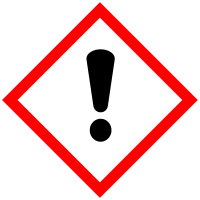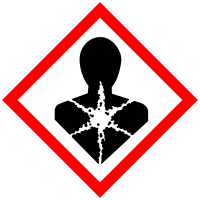
Improving Member States preparedness to face an HNS pollution of the Marine System (HNS-MS)
Diethylene Glycol
Description Top
| CAS number | 111-46-6 |
| Chemical formula | C4H10O3 |
| Standard European Behaviour Classification (SEBC) | Dissolves (D) |
| Abilities | Miscible in water. |
GESAMP Hazard profile
| A1 | A2 | B1 | B2 | C1 | C2 | C3 | D1 | D2 | D3 | E1 | E2 | E3 |
| 0 | R | 0 | 0 | 1 | 0 | 2 | 1 | 1 | NI | D | 2 |
Marine pollution Classification (MARPOL Annex II)
| Category | Description |
| Z | Noxious Liquid Substances which, if discharged into the sea from tank cleaning or deballasting operations, are deemed to present a minor hazard to either marine resources or human health and therefore justify less stringent restrictions on the quality and quantity of the discharge into the marine environment. |
Alternate names for this chemical
2,2'-Oxybisethanol
2,2'-Oxydiethanol
Bis(2-Hydroxyethyl) Ether
Ethanol, 2,2'-Oxybis-
Dihydroxydiethyl Ether
2-Hydroxyethyl Ether
Diethylene Glycol
2,2'-Oxydiethanol
Bis(2-Hydroxyethyl) Ether
Ethanol, 2,2'-Oxybis-
Dihydroxydiethyl Ether
2-Hydroxyethyl Ether
Diethylene Glycol
Physico-chemical properties Top
| Chemical formula | C4H10O3 | ||
| Molar mass | 106.14 [g/mol] | ||
| State | Liquid at 25°C and 1 atm | ||
| Fusion temperature | -10.4 [°C] | ||
| Boiling temperature | 246 [°C] | ||
| Critical temperature | 750 [°C] | ||
| Density |
|
||
| Surface tension |
|
||
| Kinematic viscosity |
|
||
| Hydrosolubility |
|
||
| Vapour pressure |
|
||
| Critical pressure | 4700000 [Pa] | ||
| Vapour density | 2.6 | ||
| Flash point (Pensky-Martens closed cup) | 124 [°C] | ||
| Lower explosivity limit (LEL) | 1.6 [%] | ||
| Upper explosivity limit (UEL) | 10.8 [%] | ||
| Vaporization enthalpy |
|
||
| Combustion enthalpy | 20300000 [J/Kg] | ||
| Specific heat capacity | 2306.4 [J/(Kg·K)] | ||
| Combustion efficiency | 98 [%] | ||
| Mass flow rate of the combustion surface | 0.02 [Kg/(m²·s)] | ||
| Radiative fraction | 22 [%] | ||
| Henry's constant | 0 [mol/(m³·Pa)] |
Behaviour Top
| Log Kow | -1.47 |
| Log Koc | 0.55 |
| Hydrolysis (Half-life) | Not hydrolysable |
| Standard European Behaviour Classification (SEBC) | Dissolves (D) |
| Bioconcentration factor (BCF) | 1 |
Ecotoxicity Top
| Lowest median lethal concentration (LC50) on algae | > 1000 [mg/l] | ||
| Lowest median lethal concentration (LC50) on crustacean | 48900 [mg/l] | ||
| Lowest median lethal concentration (LC50) on fishes | 77900 [mg/l] | ||
| Highest no observed effect concentration (NOEC) on crustacean | 8590 [mg/l] | ||
| Highest no observed effect concentration (NOEC) on fishes | 15380 [mg/l] | ||
| Assessment factor (AF) |
|
||
| Predicted No Effect Concentration (PNEC) |
|
Hazards Top


Warning
Hazards statements
Health
H302
Harmful if swallowed.
H373
May cause damage to organs through prolonged or repeated exposure, exposure cause the hazard:
GESAMP Top
GESAMP Hazard profile
| A1 | A2 | B1 | B2 | C1 | C2 | C3 | D1 | D2 | D3 | E1 | E2 | E3 |
| 0 | R | 0 | 0 | 1 | 0 | 2 | 1 | 1 | NI | D | 2 |
A1: Bioaccumulation
| Rating | Description |
| 0 | No potential to bioaccumulate |
A1a:
| Rating | Description | Criteria [mg/l] |
| 0 | No potential to bioaccumulate | Log Kow < 1 |
A1b:
| Rating | Description |
| NI | No Information |
A2: Biodegradation
| Rating | Description |
| R | Readily biodegradable |
B1: Acute aquatic toxicity
| Rating | Description | Criteria [mg/l] |
| 0 | Non-toxic | LC/EC/IC50 > 1000 |
B2: Chronic aquatic toxicity
| Rating | Description | Criteria [mg/l] |
| 0 | Negligible | NOEC > 1 |
C1: Acute oral toxicity
| Rating | Description | Criteria [mg/Kg] |
| 1 | Slight | 300 < AOTE ≤ 2000 |
C2: Acute dermal toxicity (skin contact)
| Rating | Description | Criteria [mg/Kg] |
| 0 | Negligible | ADTE > 2000 |
C3: Acute inhalation toxicity
| Rating | Description | Criteria [mg/l] (4 hours exposure) |
| 2 | Moderate | 2 < AITE ≤ 10 |
D1: Skin irritation or corrosion
| Rating | Description | Sign | GHS category |
| 1 | Mildly irritating | Mild erythema with or | Mild Irritant Category 3 |
D2: Eye irritation
| Rating | Description | Sign | GHS category |
| 1 | Mildly irritating | Mild conjunctival hype | Irritant Category 2B |
D3: Long-term health effects
| Notation | Hazard endpoint | Description | GHS category |
| No Information |
E1: Tainting of seafood
| Rating | Description |
| NI | No Information |
E2: Behaviour of chemicals in the marine environment
| Rating | Description |
| D | Dissolves |
E3: Interference with the use of coastal amenities
| Rating | Interference | Description | Interpretation | Warning |
| 2 | Moderately objectionable | 1 is a persistent floater; and/or 2 is moderately acutely toxic; and/or 3 is irritating to skin and/or eyes; and/or 4 has long-term health effects other than carcinogenicity, mutagenicity or reprotoxicity; and/or 5 is highly flammable; and/or 6 is moderately flammable and is a floater with evaporative properties | 1 E2 = Fp; and/or 2 C1 and/or C2 and/or C3 = 23; and/or 3 D1 and/or D2 = 2; and/or 4 D3 contains Ss, Sr, T, A, N, or I; and/or 5 Flashpoint <23°C; and/or 6 Flashpoint 23°C to 60°C and E2 = FE or FED | Warning issued and possible closure of amenities |
GHS Security Information


Warning
About the project
HNS-MS is a decision-support tool that Belgian and French maritime authorities as well as coastguard stations can activate in order to forecast the drift, fate and behavior of acute marine pollution by Harmful Noxious Substances (HNS) accidentally released in the marine system.
Contact us
Copyright © 2015–2026 HNS-MS Consortium
 HNS-MS has been funded by DG-ECHO under agreement ECHO/SUB/2014/693705 and runs from 1 January 2015 to 31 March 2017.
HNS-MS has been funded by DG-ECHO under agreement ECHO/SUB/2014/693705 and runs from 1 January 2015 to 31 March 2017.